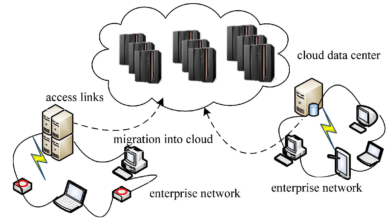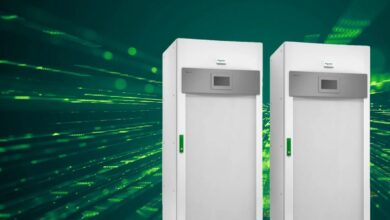Choosing Right Data Server Type
In today’s data-driven world, selecting the appropriate data server type is crucial for businesses to thrive and stay competitive. The abundance of options available can be overwhelming, making it essential to understand the factors to consider when making this critical decision. This blog article aims to provide a detailed and comprehensive guide to help you choose the right data server type for your specific needs. Whether you are a small startup or a large enterprise, finding the optimal data server type is vital for managing and storing your valuable data efficiently. It involves careful evaluation of various factors such as scalability, security, performance, and cost-effectiveness. By making an informed decision, you can ensure seamless data processing, improved productivity, and enhanced decision-making capabilities.
Understanding the Different Types of Data Servers
In today’s diverse technological landscape, various types of data servers cater to different business needs. It is crucial to understand the differences between these server types to make an informed decision. One common type is relational databases, which organize data into tables with predefined relationships. NoSQL databases, on the other hand, provide a flexible schema design, making them suitable for handling unstructured and rapidly changing data. Cloud-based servers offer the advantage of scalability, allowing businesses to adapt to fluctuating demands effectively. Each of these server types has its strengths and weaknesses, and understanding them will help you choose the one that aligns best with your specific requirements.
Relational Databases
Relational databases are widely used due to their structured nature and adherence to the ACID (Atomicity, Consistency, Isolation, Durability) properties. They are suitable for handling structured data with well-defined relationships, making them ideal for applications that require complex querying capabilities and transactional integrity. Relational databases provide a robust foundation for applications such as e-commerce platforms, content management systems, and financial systems that rely on structured data.
NoSQL Databases
NoSQL databases offer a more flexible approach to storing and retrieving data, making them suitable for handling unstructured and rapidly changing data. They do not rely on fixed schemas, allowing for easy scalability and adaptation to evolving data models. NoSQL databases excel in scenarios where data volumes are large, and the structure of the data varies significantly. They are commonly used in applications such as social media platforms, real-time analytics, and IoT (Internet of Things) systems.
Cloud-Based Servers
Cloud-based servers provide the advantage of scalability and cost-effectiveness. With cloud servers, businesses can easily scale resources up or down based on their needs, ensuring optimal performance and reducing unnecessary expenses. Cloud-based servers also offer high availability and reliability, as data is distributed across multiple servers and data centers. This type of server is particularly beneficial for businesses with fluctuating workloads, startups with limited resources, and global enterprises that require distributed data storage and processing.
Assessing Scalability and Performance Needs
Scalability and performance are critical considerations when choosing a data server type. Understanding your business’s scalability requirements will help you ensure that your chosen server can accommodate future growth without compromising performance. Scalability can be vertical, involving increasing the resources of a single server, or horizontal, involving adding more servers to distribute the workload. Performance needs vary depending on factors such as data volume, concurrent users, and response times. Assessing these factors will help you determine the level of performance required for your specific use case.
Vertical Scalability
Vertical scalability involves upgrading the resources of a single server, such as increasing the RAM or CPU power. This approach is suitable for applications with predictable growth patterns or those that require high-performance computing. Vertical scalability simplifies management and reduces complexity, but it has its limitations. Eventually, a single server may reach its maximum capacity, necessitating a switch to horizontal scalability.
Horizontal Scalability
Horizontal scalability involves adding more servers to distribute the workload and handle increasing demands. This approach allows for near-linear scalability, as additional servers can be seamlessly added to the cluster. Horizontal scalability provides better fault tolerance and resilience, as the workload is spread across multiple servers. However, it introduces complexities such as data partitioning and load balancing. Horizontal scalability is suitable for applications with unpredictable or rapidly growing workloads, allowing businesses to handle increased traffic and data volumes effectively.
Performance Metrics
When evaluating performance needs, it is essential to consider key metrics such as throughput, latency, and response times. Throughput measures the number of transactions a server can handle per unit of time, indicating its processing capabilities. Latency refers to the time taken for a request to travel from the client to the server and back, affecting the responsiveness of the system. Response times represent the overall time taken for a server to process a request and provide a response. By understanding and analyzing these performance metrics, you can ensure that your chosen data server type can meet your business’s performance requirements.
Ensuring Data Security and Compliance
Data security is a top priority for businesses in an era where data breaches are increasingly common. When choosing a data server type, it is crucial to assess the security features offered and ensure compliance with applicable regulations. Protecting sensitive data from unauthorized access, maintaining data integrity, and implementing robust authentication mechanisms are essential considerations.
Data Encryption
Data encryption plays a vital role in safeguarding sensitive information from unauthorized access. Look for data server types that offer robust encryption mechanisms, ensuring that data is encrypted both at rest and during transit. Encryption adds an extra layer of security, making it significantly more challenging for malicious actors to decipher the data even if they manage to gain unauthorized access.
Authentication and Access Control
Establishing strong authentication mechanisms is crucial to prevent unauthorized access to your data. Look for data servers that support various authentication methods, such as username/password, multi-factor authentication, or integration with external identity providers. Additionally, access control mechanisms should be in place to ensure that only authorized individuals or systems can access specific data or perform certain operations.
Compliance with Industry Regulations
Depending on your industry and the type of data you handle, compliance with industry-specific regulations may be mandatory. For example, healthcare organizations must comply with the Health Insurance Portability and Accountability Act (HIPAA), while financial institutions must adhere to the Payment Card Industry Data Security Standard (PCI DSS). Ensure that the chosen data server type meets the necessary compliance requirements to avoid legal implications and protect sensitive data.
Evaluating Cost-Effectiveness
Cost is a significant consideration when choosing a data server type. Evaluating the costs associated with different options will help you make a cost-effective decision without compromising on quality. It is essential to consider both the initial setup costs and the long-term maintenance expenses, as well as any scalability costs that may be incurred as your business grows.
Initial Setup Costs
When implementing a data server, there may be initial setup costs involved, including hardware or software purchases, licensing fees, and professional services for configuration and integration. Assess these costs and compare them across different server types to determine the most cost-effective option for your business.
Maintenance and Operational Costs
Maintenance and operational costs include ongoing expenses such as system administration, monitoring, backups, and upgrades. Consider the resources required to manage and maintain each type of data server and evaluate the associated costs. Some server types may require specialized expertise or additional personnel, while others may offer managed services that reduce the burden on your internal IT team.
Scalability Costs
If your business expects significant growth or fluctuations in data volume, it is crucial to consider the scalability costs associated with each data server type. Some servers may require additional hardware or licensing fees as you scale up, while others may offer more flexible pricing models. Understanding the long-term scalability costs will help you make an informed decision that aligns with your budget and growth expectations.
Considering Integration and Compatibility
Integration with existing systems and compatibility with different programming languages and frameworks are crucial aspects to evaluate when choosing a data server type. Seamless integration ensures that your data server can work harmoniously with your existing infrastructure, minimizing disruptions and reducing development efforts.
Integration with Existing Systems
Assess the compatibility of each data server type with your existing systems, such as enterprise resource planning (ERP) software, customer relationship management (CRM) systems, or other critical applications. Look for data servers that offer APIs or connectors that facilitate smooth integration and data exchange between systems. This ensures that your data server seamlessly integrates into your existing technology stack, enabling efficient data flows and eliminating silos.
Compatibility with Programming Languages and Frameworks
If your organization uses specific programming languages or frameworks, consider the compatibility of the data server type with your preferred technologies. Look for support and libraries available for your programming language of choice. Compatibility ensures that developers can work with familiar tools and frameworks, reducing development time and minimizing the learning curve.
Ngadsen test2
Exploring Managed vs. Self-Managed Servers
When choosing a data server type, you need to decide between managing the server infrastructure yourself or opting for a managed service. Managed servers offer the advantage of offloading infrastructure management tasks to a third-party provider, allowing you to focus on your core business activities. Self-managed servers provide more control and customization options but require dedicated resources for maintenance and administration.
Managed Servers
Managed servers are ideal for businesses that prefer to delegate infrastructure management tasks toa third-party provider. With managed servers, the provider takes care of tasks such as hardware provisioning, software updates, security patches, and backups. This allows you to free up your internal resources and focus on your core competencies. Managed servers are particularly beneficial for small businesses or those with limited IT resources, as they provide expertise and support without the need for an extensive in-house IT team.
Self-Managed Servers
Self-managed servers provide more control and customization options, as you have direct access to the underlying infrastructure. This allows you to tailor the server configuration to your specific needs and requirements. Self-managed servers are suitable for businesses with specialized IT teams or those that require fine-grained control over their server environment. However, it’s important to note that self-management also entails responsibilities such as regular maintenance, security updates, and troubleshooting, which require dedicated resources and expertise.
Analyzing Data Server Performance Metrics
Performance is a crucial aspect to consider when selecting a data server type, as it directly impacts the efficiency and responsiveness of your applications. Analyzing performance metrics will help you assess how well a data server type can handle your workload and meet your performance expectations.
Throughput
Throughput measures the number of transactions a server can handle per unit of time. It indicates the processing capacity of the server and is particularly important for applications with high transaction rates. Consider the expected workload of your application and compare the throughput capabilities of different data server types to ensure that they can handle your anticipated transaction volume efficiently.
Latency
Latency refers to the time it takes for a request to travel from the client to the server and back. It directly affects the responsiveness of your application. Lower latency results in faster response times and a better user experience. Evaluate the latency characteristics of different data server types and consider the specific requirements of your application. Applications that require real-time interactions, such as online gaming or financial trading, typically demand low latency.
Response Times
Response times encompass the overall time taken for a server to process a request and provide a response. It includes the time spent on processing the request, accessing the data, and sending the response back to the client. Evaluate the response time benchmarks of different data server types and ensure they align with your performance needs. High response times can lead to user frustration and impact the overall user experience of your application.
Considering Future Growth and Flexibility
When choosing a data server type, it’s essential to consider your future growth plans and the flexibility of the server to adapt to changing requirements. Selecting a server that can accommodate your evolving needs will save you from potential migration or scalability challenges down the line.
Scalability
Scalability is a crucial factor to consider, especially if your business anticipates significant growth or fluctuating workloads. Assess the scalability options offered by different data server types. Vertical scalability allows you to scale up by increasing the resources of a single server, while horizontal scalability involves adding more servers to distribute the workload. Consider the scalability limits and the ease of scaling for each server type to ensure that it can support your future growth without compromising performance.
Flexibility
Flexibility is vital to accommodate changing business requirements and technological advancements. Evaluate the flexibility of different data server types in terms of data modeling, schema design, and handling evolving data structures. NoSQL databases, for instance, provide more flexibility in adapting to changing data models compared to traditional relational databases. Consider how well a data server type can support your business’s ability to innovate and adapt to emerging technologies and data trends.
Real-Life Use Cases and Success Stories
Exploring real-life use cases and success stories can provide valuable insights into how different data server types have been implemented successfully. By examining how other businesses have leveraged specific data server types, you can gain inspiration and learn from their experiences.
Retail Industry: Handling High Transaction Volumes
In the retail industry, handling high transaction volumes is crucial for smooth and efficient operations. Relational databases have proven to be reliable solutions for managing inventory, processing sales, and tracking customer data. Their structured nature and ACID properties ensure transactional integrity and consistency. Retail giants such as Amazon and Walmart employ relational databases to handle millions of transactions daily, ensuring accurate inventory management and seamless customer experiences.
Social Media Platforms: Scalability and Agility
Social media platforms generate vast amounts of unstructured data from user interactions, posts, and multimedia content. NoSQL databases, with their flexible schema design and horizontal scalability, are well-suited for handling the dynamic nature of social media data. Platforms like Facebook and Twitter utilize NoSQL databases to store and process user-generated content, enabling real-time interactions and personalized user experiences.
Financial Institutions: Security and Compliance
Financial institutions deal with highly sensitive customer information and must adhere to strict security and compliance regulations. Relational databases, with their robust security features and support for complex transactional operations, are commonly employed in this industry. Banks and financial organizations rely on relational databases to store and manage customer data securely, ensuring compliance with regulations such as PCI DSS and KYC (Know Your Customer) requirements.
IoT Applications: Handling High Data Volume and Variety
The Internet of Things (IoT) generates vast amounts of data from various sources, including sensors, devices, and machines. NoSQL databases, capable of handling large volumes of unstructured and heterogeneous data, are ideal for IoT applications. Companies implementing smart city solutions or industrial IoT systems leverage NoSQL databases to ingest, process, and analyze massive data streams in real-time, enabling efficient monitoring, predictive maintenance, and data-driven decision-making.
Choosing the Right Data Server Type: A Decision-Making Framework
After considering all the factors discussed throughout this article, it’s essential to have a systematic decision-making framework to guide your selection process. This framework consolidates the key aspects and provides a structured approach to help you choose the right data server type.
1. Define Your Requirements
Start by clearly defining your business requirements, including scalability needs, performance expectations, security and compliance considerations, integration requirements, and budget constraints. Having a clear understanding of your specific needs will guide your decision-making process.
2. Evaluate Options
Thoroughly research and evaluate the different data server types available in the market. Consider their features, strengths, weaknesses, and suitability for your specific requirements. Compare factors such as scalability, performance, security, cost-effectiveness, integration capabilities, and compatibility with your existing systems.
3. Analyze Use Cases
Examine real-life use cases and success stories from businesses in similar industries or with comparable requirements. Understand how others have successfully implemented specific data server types and the benefits they have achieved. Draw inspiration from these use cases and identify potential pitfalls or challenges that may arise.
4. Consider Long-Term Needs
Think about your business’s future growth plans and the scalability and flexibility requirements that may arise. Consider projected data volumes, changing data structures, and emerging technologies. Choose a data server type that can support your long-term needs and accommodate future growth without major disruptions or migration challenges.
5. Evaluate Total Costs
Assess the total cost of ownership for each data server type, considering not only the initial setup costs but also maintenance and operational expenses. Factor in scalability costs and any additional resources or expertise required. Choose a data server type that offers the most cost-effective solution while meeting your requirements.
6. Seek Expert Advice
If needed, seek advice from experts or consult with professionals who specialize in database management. They can provide valuable insights and help you navigate through the complexities of choosing the right data server type. Their expertise can ensure that you make an informed decision and avoid potential pitfalls.
In conclusion, selecting the right data server type requires careful consideration of several factors. By understanding the different types available, assessing scalability and performance needs, ensuring data security and compliance, evaluating cost-effectiveness, considering integration and compatibility, analyzing performance metrics, exploring managed vs. self-managed servers, considering future growth and flexibility, examining real-life use cases, and following a decision-making framework, you can make an informed decision. Remember, making the right choice can significantly impact your business’s efficiency, productivity, and overall success.



